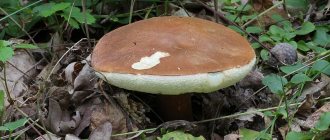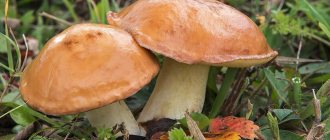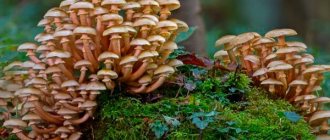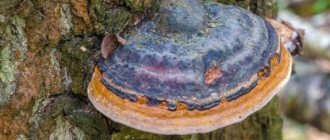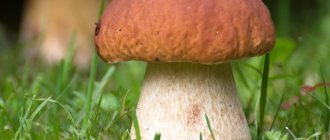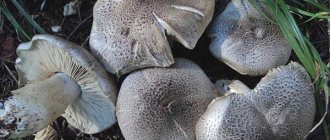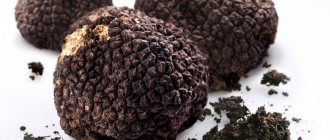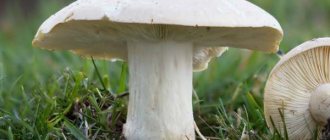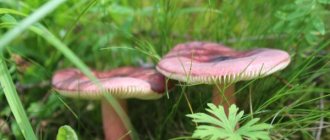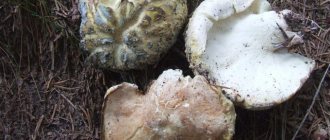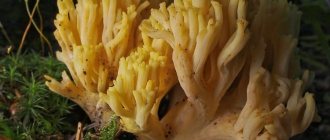Polypores (lat. Fomes fomentarius) are perennial parasitic fungi that prefer to grow on trees. You rarely see them on earth. They like old stumps and trees, dead wood, and dead wood. This is the most mysterious and unusual representative of the mushroom kingdom. At first glance, it is a completely useless, parasitic object. But, in fact, tinder fungi can be extremely useful.
Features of tinder fungi
Polypores represent a non-systematic and little-studied group of fungi, which belongs to the department of basidiomycetes. About 1.5 thousand species are known. There are poisonous and edible tinder fungi, woody and gristly ones. The fungal body of all tinder fungi is extremely resistant to any weather influences - cold, heat, moisture.
Polypores are attached to the tree body with the entire fruiting body or just the stem, depending on the species. Because of its original shape, the mushroom is popularly called the “devil’s hoof.”
The mushroom body is formed by thin threads - hyphae, intertwined with each other. The mycelium is buried deep in the woody body. To penetrate the bark, hyphae secrete enzymes that dissolve the cell walls of the wood. The hyphae, at first thin and filamentous, become skeletal.
Depending on the shape of the fruiting body, tinders are divided into:
- Sedentary. They are attached to the wood on one side. May have a side leg.
- Prostrate. They look like a thin cake, tightly attached to the trunk. They resemble tree bark in color and structure.
- With cap and stem.
The weight of the mushroom body is from 1 to 20 kg. Size – from 20 cm to 200 cm in diameter. They can be gray, red, black, orange, yellow - there are many shades.
Similar Species
The appearance of the Scaly Polypore is quite unique, and it is difficult to confuse it with other representatives of the tinder family.
Polyporus tuberaster
Polyporus tuberaster
The only tinder fungus that looks similar to our hero is the similar coloring of the cap and the same concentric brown scales. But it is distinguished by a much more modest size - the cap is up to 20 cm, and the places where it grows - the tuberous polypore grows on the remains of deciduous trees, especially preferring linden. It is also edible at a young age, but has neither a special taste nor a pronounced aroma. This mushroom has a special connection with the Scaly tinder fungus, since previously it was he who bore this name, and then mycologists changed their minds, renamed it tuberous tinder fungus, and gave the former name to our hero.
Polypore Lumpy Daedaleopsis Confragosa
Polypore Lumpy Daedaleopsis Confragosa
It is similar to the Hare only in shape and habitat. It is smaller in size - up to 18 cm, has a woody-brown cap without scales, and bitter, odorless flesh. Due to its bitterness, it is considered unfit for food.
When and where does it grow?
The habitat depends on the type of tinder. Thus, the sulfur-yellow (conditionally edible) tinder fungus prefers places with a mild climate. But the real tinder fungus is widespread throughout Russia and Europe. It loves to grow on birch and pine trees, and can also be found on alder, oak, beech, and other trees.
On the one hand, saprophyte negatively affects the environment. Causing white rot in wood tissue, it makes it brittle. It usually affects dead wood, since the main way of infecting a tree with tinder fungi is:
- broken branches;
- cracks and other damage in the bark.
Parasitic mushrooms are real forest orderlies. They destroy old wood that has died due to windbreaks, drought or other adverse influences. Decayed wood enriches the soil.
It is recommended to collect polypores for pharmaceutical and food purposes:
- during spring sap flow;
- In the fall, the mushroom, preparing for winter, stores up useful substances.
You should not take tinder fungi:
- growing on dead wood;
- growing near the ground.
Preferably mushrooms located as high as possible. Mushrooms are cut with a well-sharpened knife or ax. If the mushroom body crumbles, it is not suitable for collection.
Varieties
For tinder fungi, in mushroom science, a special classification is provided. They are divided into:
- Hymenomycetes - their mycelium is located in the substrate, for example, in wood or soil;
- Gasteromycetes - their fruiting bodies are completely closed.
Among tinder there are several families:
- poriaceae;
- polypore;
- telephore;
- Coniophoraceae.
Polypores are mostly perennials, but there are also annual representatives. They grow throughout the summer - from June to September. At the end of summer, annuals gradually break down and become food for insects.
The body of a perennial grows for months, or even years. By looking at the annual rings you can find out how many months or years the tinder fungus is. The mushroom is characterized by species diversity. Let's look at the most famous and common types of tinder fungi.
Edible tinder fungi
Among tinder there are edible and inedible species. The latter are the overwhelming majority. There are no poisonous varieties among tinder fungi. You can’t get poisoned by the pulp of tinder fungi; it’s just extremely harsh in many representatives of the group. And the taste of these mushrooms is not impressive.
When going into the forest, carefully study the appearance of edible tinder mushrooms. Among them there are several quite tasty specimens - they are used in cooking.
Sulfur-yellow tinder fungus
It is classified as conditionally edible, and the toxins contained in it can cause poisoning. The “young animals” are eaten – their flesh is much more tender than that of the old-timers.
Only young sulfur-yellow tinder fungi growing on deciduous trees are suitable for food. There should be no dark spots on their caps.
Cut mushroom bodies can be stored in the refrigerator for 3-5 days. They can also be frozen for a whole year. To prevent the product from deteriorating, a temperature of at least minus 18°C is needed.
In the video you can see how sulfur-yellow tinder fungus is fried with onions and dill in forest conditions. The recipe is clear, step-by-step. The author of the video also suggests other ways to prepare tinder fungus:
Scaly
Prefers to grow on deciduous trees, especially elms. Its yellowish-gray fruit body is covered with brownish speckled scales. Scaly polypores grow singly. They have thick black legs. When young, they are suitable for food - they are pickled, salted, dried, and added to sauces and soups. Traditional medicine uses them to produce drugs that stimulate the functioning of the gallbladder.
liverwort
It can be found on oak trees. It is shaped like a tongue. The body is fleshy, as if saturated with red liquid. Growth time: from July to frost. The section shows a marble pattern. Used at a young age - for pickling.
Umbrella
Resembles a large lace bouquet. Cap color is brown. There is a multi-colored border. Stripes can be of different colors - black, beige, lemon, orange. Umbrella polypores are popular in China. Here it is often served as a main course.
Winter
It grows on stumps and trunks near the ground. Prefers alder, rowan, and willow. Growth begins in the spring. Grows until frost. The shape of the cap is convex. Color – from yellowish to grayish. The white flesh is suitable for eating. Usually used for drying.
Sheep
More than others, it resembles a mushroom in the classical presentation. Its fleshy round cap has folded edges. The leg is short and thick. Used in folk medicine and pharmacology. Young fruits are used to prepare powders, extracts, infusions - water and alcohol. When young, it is used as food. Sheep tinder fungus can be pickled, dried, and salted.
Contraindications
Taking medications based on tinder fungi can cause a serious allergic reaction, so be sure to take precautions. Improperly prepared young tinder fungus causes poisoning. It is edible, but pregnancy and lactation are contraindications for treatment with tinder fungi. Children are not treated with drugs made from tinder fungi at all.
You should refuse therapy if you have a history of urolithiasis or gallbladder dysfunction. For diarrhea, do not use leaf polypore: it has a laxative effect.
Inedible tinder fungi
Inedible polypores are not deadly, but can cause unpleasant symptoms:
- allergic reaction;
- intoxication of the body with corresponding symptoms - vomiting, dizziness, nausea.
Many tinder fungi, including inedible ones, are actively used in medicine - medicinal products are prepared from them. Any use of mushrooms should be preceded by consultation with a physician.
Birch
Likes to grow on dead birch trunks. Its body is convex, gray-white in color. It contains many amino acids and microelements. This was appreciated by microorganisms and insects, who generously laid larvae in the mushroom. Pharmacology uses mushroom polymers isolated from this mushroom to produce dietary supplements for diabetics.
The video talks about birch polypore, its various uses (medicine) and other beneficial properties. The blogger shows from his own experience how to use it correctly:
Beveled
It is also called chaga. Grows on birch, alder, and rowan trees. The body is hard, woody. The shape is irregular, the surface is rough. Color – dark brown or black. There are white veins on the cut. Chaga is used in medicine - for decoctions and infusions.
Coarse-haired
Prefers stumps and semi-dry trees. The hat is large and rough, looking like a sponge. At a young age it has a yellowish or grayish color, and as it grows it becomes brown with a greenish tint. The taste of the pulp is unpleasant - bitter, reeks of anise.
Humpback
The hat has the shape of a semicircle. The shade is greenish. The pulp is dense - white or yellow. The surface of the cap is velvety. The mushroom strengthens blood vessels. It is part of drugs used to treat sarcoma, throat cancer, and leukemia. Recent studies have shown that the humpback polypore has a detrimental effect on the AIDS virus.
Larch (real)
Grows on larches, fir, cedar. Has a thick fruiting body. Length – 30 cm. Color – white or yellow. The surface is rough. There are furrows and brown spots. Young - soft, later - hard, crumbling. The taste is bitter.
Lacquered (reishi)
A mushroom with unique properties. It is actively used for the treatment of oncology and the cardiovascular system. Demanded in folk medicine.
Interesting Facts
Melanopus forquignonii.
Our ancestors did not even think about eating tinder fungus, but they used it with no less benefit. The thoroughly dried mushroom was ground to a powder and stored in a hermetically sealed container. The crushed mushroom was called “tinder” and was used to quickly start a fire, as it ignited very easily. Hence the name of the mushroom.
Why are tinder fungi dangerous for trees?
Polypores are parasites; they use trees as food sources. By sucking nutrients and water from the wood, they slowly kill it. Several years pass until the plant, exhausted by parasitic fungi, loses strength and strength - it becomes dry. A small hurricane is enough to break a fragile tree. But the tinder fungus doesn’t care about this development of events - they continue to drink juice from the tree fallen by the windbreak.
Killer mushrooms perform an important mission in the forest - they make room for new trees. Peculiar forest orderlies. But in orchards grown by humans, tinder fungi must be fought mercilessly.
Saving lives
The pulp of the Scaly Polypore is also edible in old, woody fruiting bodies. In normal life, no one would think of eating it. But life is not always normal. During times of war and famine, enemy invasions and partisan warfare in the forests, people collected tinder fungi, ground them, and cooked something like mushroom soup from the hares.
Scaly tinder fungus - a spotted woody delicacy
What affects the growth of tinder fungus?
Polypores live on both dead and living trees. Ideal growing conditions for tinder fungi:
- The specific type of tree depends on the type of tinder fungus. Some people like coniferous trees, others like deciduous trees.
- The fruiting body needs light.
- High humidity promotes growth. It is not in vain that tinder species look for damp places - cellars, earthen shelters, wells.
The more nutritious the wood, the more minerals it contains, the faster the parasitic fungus grows, and the faster it kills its owner.
In unfavorable conditions - inappropriate humidity, temperature, pressure - tinder fungi stop growing. Gardeners take this feature into account in the fight against parasitic fungi.
Beneficial features
The medicinal properties of tinder fungus have been used for a long time. Examples of its use are found in the medical literature of Ancient Greece and China. The tinder fungus is an organism containing a lot of resinous substances, polysaccharides, vitamins and minerals. Young fruiting bodies collected in May can be especially beneficial.
The features of the medicinal tinder fungus are its hemostatic and antimicrobial effects. Agaric acid helps eliminate toxins accumulated in the body, cleanses the body of toxins and cholesterol plaques. Lanophil polysaccharides allow you to gently cleanse the liver and improve blood circulation.
Irina Selyutina (Biologist):
In Japan, clinical studies were conducted on the effects of larch tinder fungus on the human body. They made it possible to isolate polysaccharides, which were later called “lanofil”. This polysaccharide has the ability to influence our liver so that, under its influence, it begins to secrete the enzymes necessary for the breakdown of glucose and fats, i.e. normal metabolism is restored.
Settling on trees, the parasite destroys them. Despite this, it is classified as a sanitary species that clears the forest of old trees, which allows young trees to fully develop. Its importance in agricultural activities is invaluable. The parasite produces a large number of living bacteria, under the influence of which old trees quickly rot and turn into natural fertilizer. However, it is important to ensure that the polypores do not spread.
In garden conditions, the appearance of fungi on trees is prevented by following basic agrotechnical rules. If you do not take preventive measures in time, but simply remove the mushrooms from the bark, they grow every year and, like a sponge, absorb useful substances from the vessels and sieve cells of the wood. As a result, the tree will have to be uprooted.
The value and benefits of the mushroom
The chemical composition of many tinder fungi is poorly understood. Scientists have discovered antitumor substances in these mushrooms, so their composition is now being actively studied. In tinder bodies, one can find “deposits” of potassium, calcium, copper, iron, manganese, zinc, lead, cadmium, and germanium. The collection of tinder fungi intended for medicinal or food (if the species is edible) purposes is not recommended near roads and near industrial zones.
The mushroom is popularly called chicken of the woods due to its unusual shape and nutritional value. 100 g of fruiting body contains 22 kcal. 100 g of mushroom contains:
- protein – 3.09 g;
- fats – 0.34 g;
- carbohydrates – 3.26 g;
- water – 92.45 g.
And:
- cellulose;
- resinous substances;
- B vitamins;
- minerals;
- lipids;
- amino acids.
Application in medicine
Polypores are valued primarily as a medicinal product. Mushrooms are used for external and internal use. They are prepared from:
- alcohol tinctures;
- decoctions;
- dry powders - for dissolution in water.
Polypores promote the breakdown of fats, remove radionuclides, carcinogens and poisons from the body, restore the digestive system, treat constipation, and kill bacteria that cause gastritis.
Each tinder has certain properties, so specific types of tinder are used to treat certain diseases.
Growing
All tinder species reproduce by spores - they are located on the basidia. Groups of spores, maturing in tubes tightly fused together, spill out. They are carried away by the wind to new habitats. Once on fertile soil - old or damaged wood, they begin to reproduce. A mycelium is formed, which, branching along the tree bark, destroys it.
Growing on substrate
Polypores are easy to cultivate. They are grown in substrate. To prepare it you need:
- sawdust;
- shavings;
- bark of small branches.
Stumps and wooden beams can be used as a substrate. After making holes with a drill, the mycelium is placed in them.
The order of mycelium laying:
- The mixture is poured with boiling water.
- When the temperature of the substrate drops to room temperature, it is squeezed out and mixed with mycelium.
- Place in plastic bags.
- Having made slits in the bags, they are placed in a room where the humidity is 80%. Lighting – natural, temperature – 20°C.
- The harvest will be ready after 30-40 days.
Growing on stumps
Instead of a substrate, you can use stumps and wooden beams. Disembarkation order:
- The wood is kept in water.
- The required number of cuts are made on the soaked wood - they are sawed out or drilled.
- The mycelium is placed into the cuts made.
- Wooden beams are placed in a shady place and covered with foliage.
The “crops” are watered from time to time, this is especially important during drought. The first mushrooms will appear in 4 months.
Polypores are a real gift of nature. You should not perceive them negatively - there is nothing superfluous in nature, and tinder fungi are only part of the cycle of substances. Polypores are invaluable for pharmacology and a real treasure for medicine. And edible mushrooms of this family are also excellent meat substitutes.
0
0
Copy link
